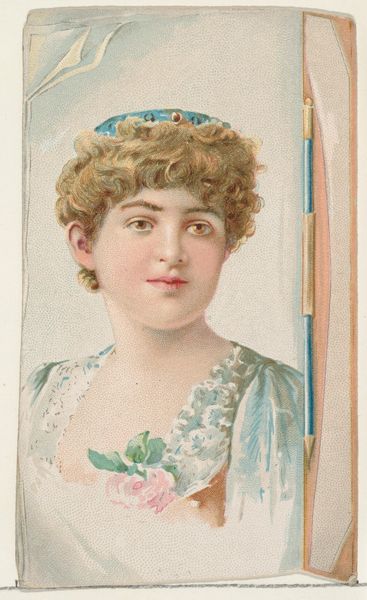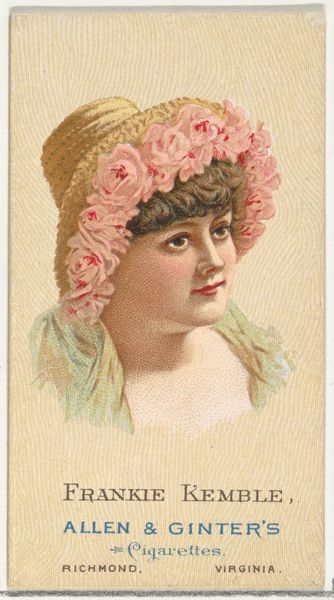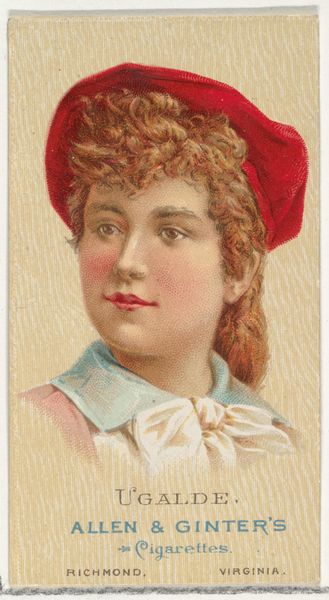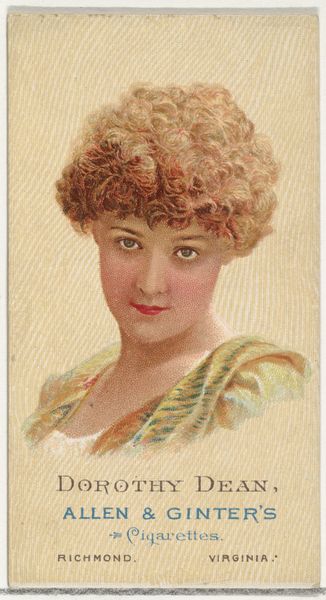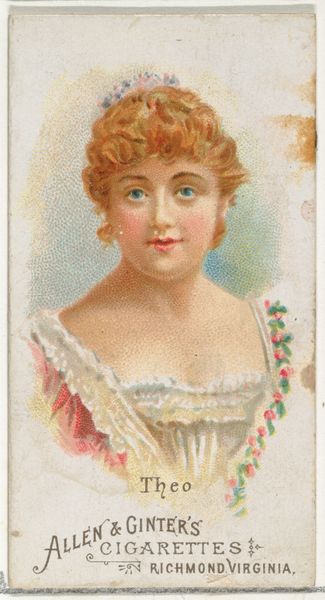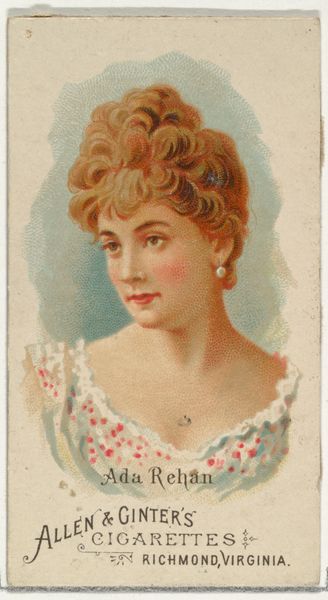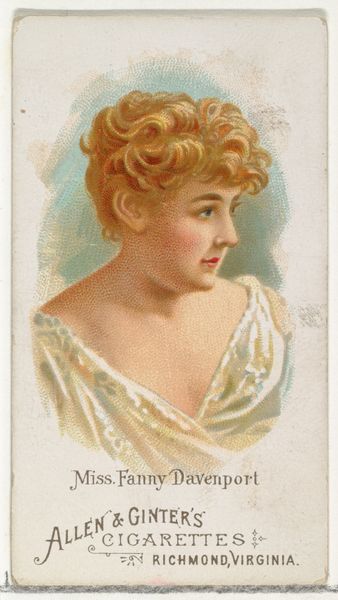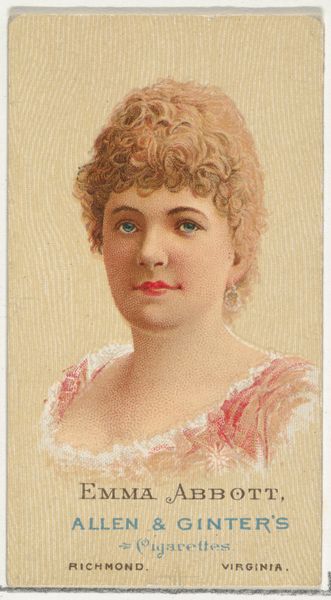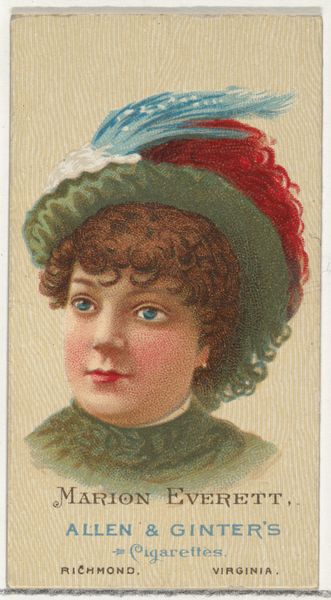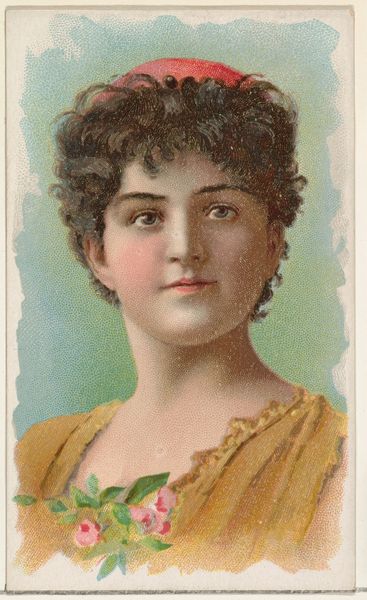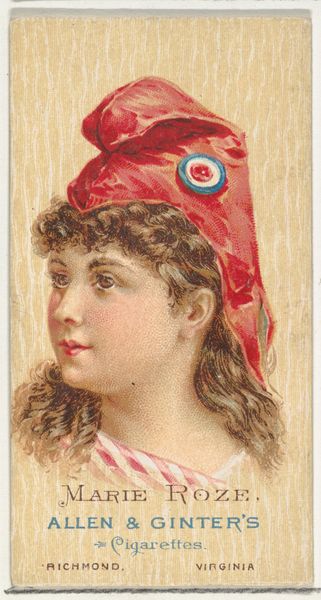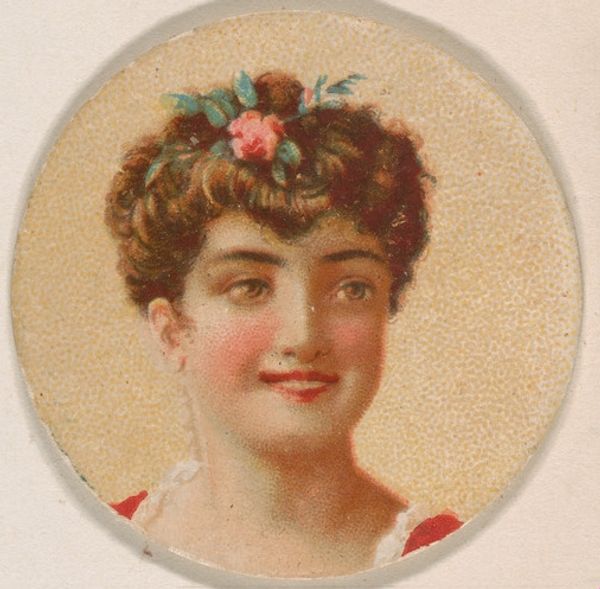
Minnie Hauk, from World's Beauties, Series 2 (N27) for Allen & Ginter Cigarettes 1888
0:00
0:00
drawing, print
#
portrait
#
drawing
# print
#
impressionism
#
portrait art
#
watercolor
Dimensions: Sheet: 2 3/4 x 1 1/2 in. (7 x 3.8 cm)
Copyright: Public Domain
Editor: This is "Minnie Hauk," a print from 1888 by Allen & Ginter, originally for cigarette cards. It has an almost watercolor-like feel to it. I’m curious, what can you tell me about this piece and its cultural moment? Curator: We must consider this image, less as a work of artistic genius, but more as an artifact born of industrial production. The very material – the paper, the ink – and the methods used to mass-produce these cards are deeply tied to consumer culture of the late 19th century. How do you see its relationship to commercialism? Editor: I hadn't really thought about that! It's strange to consider that a collectible item featuring a singer was actually meant to sell cigarettes. It shifts how you think about her presentation; does her portrait become less about artistic expression, and more about promoting a consumerist lifestyle? Curator: Precisely. Minnie Hauk becomes a commodity herself. The cards functioned within a vast network of production, distribution, and consumption. Consider the labor involved: from the harvesting of tobacco, to the printing of these images, to the distribution networks which relied heavily on underpaid workers. What ethical concerns arise? Editor: I see your point, it wasn't simply about creating art but an entire industry of production. It certainly brings up uncomfortable questions. Considering Allen & Ginter's dependence on labor, are we seeing beauty or exploitation in this portrait? Curator: That tension is key. To focus solely on aesthetics overlooks the power dynamics embedded within the image itself and the context in which it was created. The card isn't just an image; it's evidence of a complex system. Editor: I never looked at art that way before. I’m definitely considering the industrial implications behind the surface image. Curator: Good. A critical understanding demands we consider the mechanisms of material production, distribution, and consumption in order to evaluate art.
Comments
No comments
Be the first to comment and join the conversation on the ultimate creative platform.
